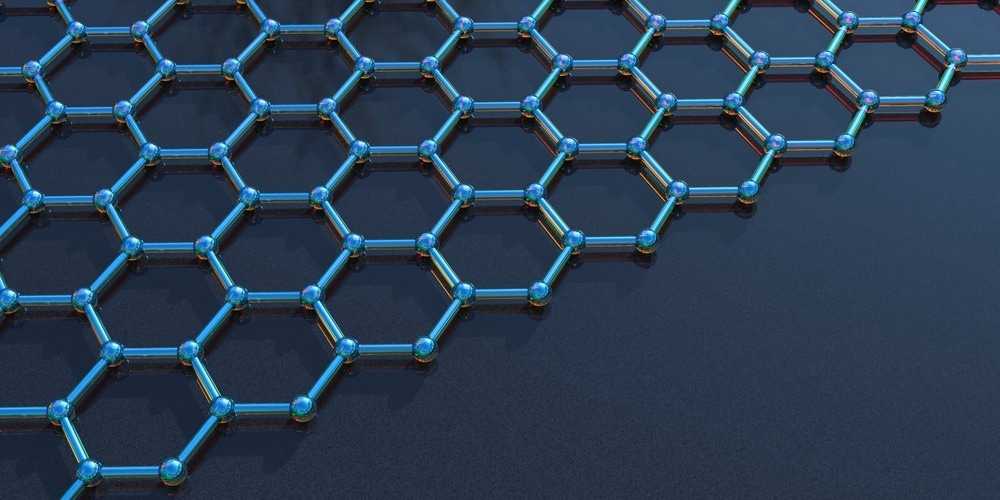Using four-photon scattering, Purdue University researchers found that graphene's thermal qualities might not be as groundbreaking as first believed.

Image Credit: Kateryna Kon/Shutterstock.com
Graphene is the first two-dimensional material that human beings ever created. It is basically a layer of carbon, one atom thick. It was first discovered in 2004, and won the Nobel Prize for Physics in 2010. Ever since then, it is been studied by many researchers because of its unique properties.
Xiulin Ruan, Professor, Mechanical Engineering, Purdue University
Graphene, for example, is reported to conduct electricity better than any other substance known to science and is noted for its material strength. Thermal transport researchers were also quick to label it as the best heat conductor.
Previously, the material thought to have the highest thermal conductivity was diamond. That is the material that can transfer the most heat the quickest. But when graphene came out, mainstream studies showed it to be much better than diamond.
Zherui Han, Ph.D. Student, Purdue University
Watts per meter per Kelvin is the unit used to test thermal conductivity. The widespread consensus is that diamond has a heat conductivity of roughly 2,000 on this scale. However, early estimates of graphene’s heat conductivity exceeded 5,000 when scientists started investigating it. Scientists who study heat transfer, like Ruan, were intrigued by this.
Ruan added, “However, subsequent experimental measurements and modeling have refined graphene’s thermal conductivity. More recent papers brought the number to around 3,000, which is still quite better than diamond. But we found something altogether different.”
At room temperature, Ruan's group predicts that graphene’s thermal conductivity will be 1,300 W/(m K), which is less than both diamond and the raw graphite material from which graphene is formed.
Due to the importance and timeliness of their discovery, it was published as a letter in Physical Review B.
The difference between their work and earlier work is due to a phenomenon known as four-phonon scattering. Heat transfer experts use phonons to describe the transport of heat in solids on a quantum-mechanical level. Until recently, researchers could only predict heat transport through solids using three-phonon scattering.
However, in 2016, Ruan’s team established a universal theory of four-phonon scattering, which they successfully measured a year later. This resulted in Ruan earning the International Phononics Society’s highest accolade in 2023.
So, what does this have to do with graphene?
“Graphene is a two-dimensional material of only one atom thick. Previous studies suggest that three-phonon scattering would be restricted by this two-dimensionality, which in theory makes graphene much more thermally conductive than bulk materials. But four-phonon scattering is not restricted by the 2D nature of graphene; in fact, the effect is quite strong. Our work has shown that four-phonon scattering becomes the leading scattering channel in graphene over three-phonon scattering. This is a striking result,” Han stated.
One impediment to this discovery was a lack of raw computing power. This four-phonon scattering calculation necessitated a parallel computing method, effectively using a computing cluster with one terabyte of memory. This was achieved at Purdue University’s Rosen Center for Advanced Computing.
These calculations are currently all theoretical. The team is currently collaborating with Prof. Li Shi of the University of Texas at Austin to validate the findings experimentally, with funding from the National Science Foundation. Previous graphene measurements had significant error bars that needed to be decreased to validate their theory. They also intend to forecast the thermal conductivity of graphene with several atomic layers rather than just one.
Ruan further stated, “Without experimental validations as yet, we know the community will be skeptical about this very non-mainstream prediction. We faced the same skepticism in 2017 when we predicted similar aspects of boron arsenide. Fortunately, that prediction was confirmed by three important experiments a year later. Since then, our four-phonon scattering theory has been supported by more and more experimental evidence, and we hope it will hold for graphene as well this time. We make our software open source, so other scientists can test the four-phonon theory.”
Zherui Han has published a study outlining the use of his four-phonon thermal conductivity solver on GitHub. Any heat transfer scientist who wishes to undertake a comparable study is invited to utilize the software.
Han further added, “Graphene being the first two-dimensional material, many people thought it was like magic. It was believed to have all these superior properties: thermal, mechanical, optical, electrical. As thermal researchers, it’s our job to establish whether that part is true. Graphene is still a good heat conductor, but our work predicts it’s not better than diamond.”
“I always say, exceptions are how science moves forward. We are cautiously optimistic about our findings. With four-phonon scattering, it’s our hope to deliver much more accurate theoretical assessments of these materials in the future,” Ruan concluded.
The National Science Foundation (Grants Nos. 2015946 and 2321301) helped fund a part of this research.
Journal Reference:
Han, Z., and Ruan, X. (2023) Thermal conductivity of monolayer graphene: Convergent and lower than diamond. Physical Review B. doi:10.1103/PhysRevB.108.L121412